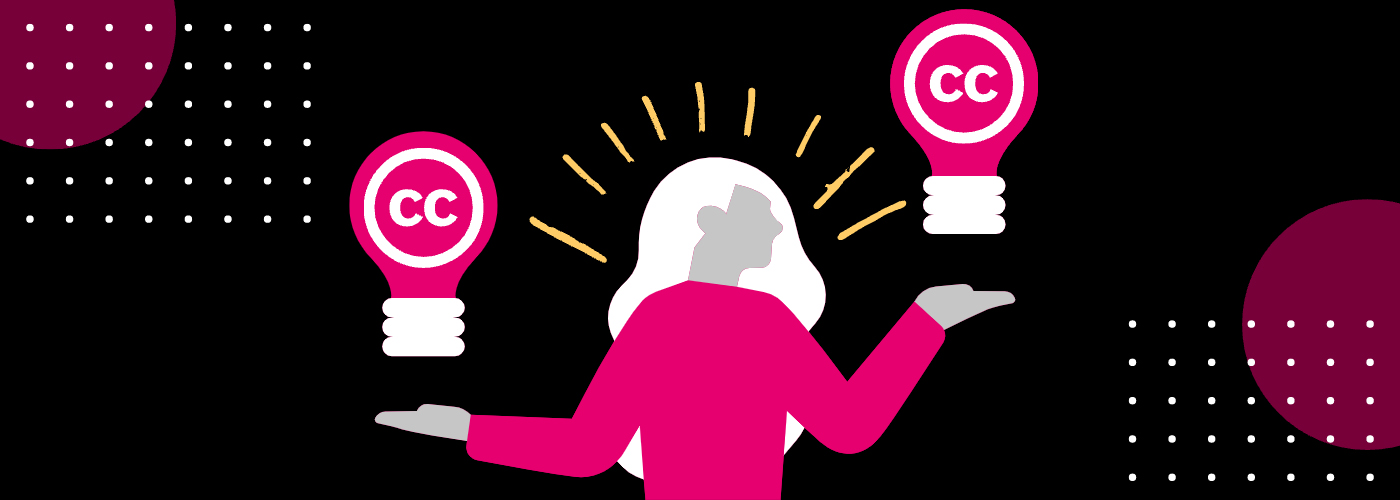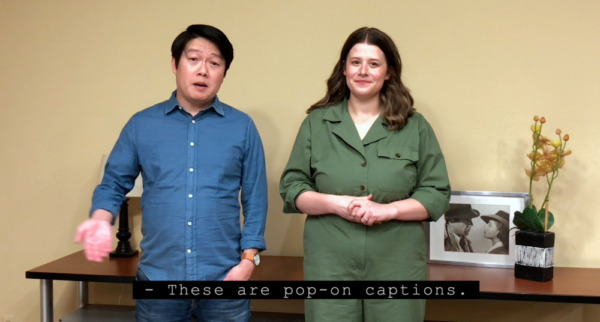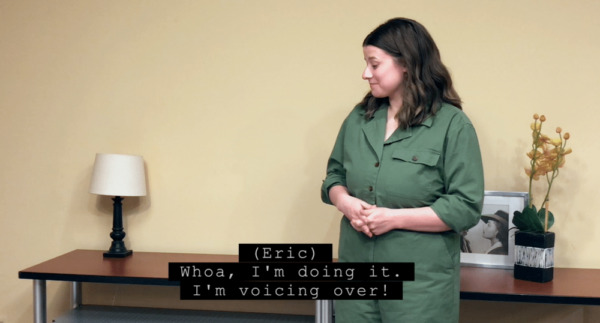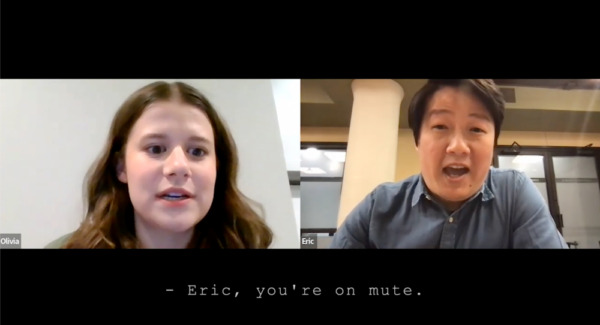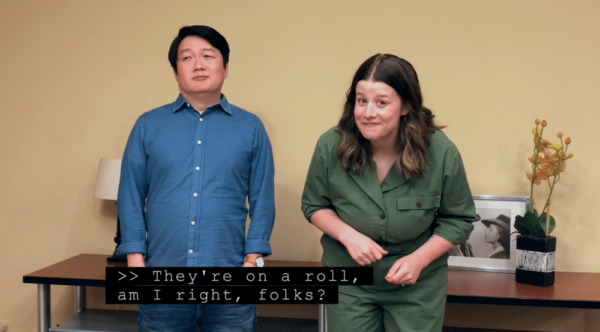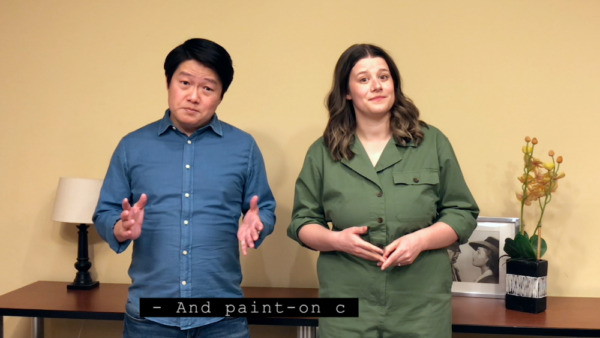Closed Captioning Types: Learn the Difference Between Pop-On, Roll-Up, and Paint-On
Beginner’s Guide to Captioning [Free eBook]
When beginning the process of ordering captions for your media, it can be easy to get bogged down with all the variations, customizations, and styles that can be applied to your captions. Even the decision of which captioning service to use (live or recorded) can be daunting if you are new to video accessibility.
The good news? Captioning doesn’t have to be complicated, because choosing between pop-on and roll-up captioning styles is simpler than you might think.
In this blog, we will provide you with a comprehensive overview of the three main formats of captioning: pop-on, roll-up, and paint-on. We’ll shed light on their applications, explore use cases, and discover the possibilities for customization within each type so that you’re empowered to make informed decisions for your media.
Pop-On Captions
What are they?
Pop-on closed captions are what you’re most used to seeing in recorded (non-live) broadcast, streaming, and web content. These captions are exactly what they say they are: they pop on your screen and then disappear when the next caption appears.
Who uses them?
Pop-on style is standard for recorded content because these captions can be highly customized to best fit the viewing experience and reflect aspects such as timing, tone, and location of speakers. Closed captioners have the ability to manipulate timing to closely synchronize with words as they are spoken.
Pop-on captions are not used for live broadcast content. The nature of live captioning means that each word written is immediately sent to an encoder, and encoders must wait for all text information before they can display a caption. If live captions utilize pop-on style, the text would be delayed, defeating the point of having quick captions delivered right to the viewer as the program is happening.
What do they look like?
For the most optimal readability across viewing platforms, our captioning experts have found that recorded pop-on captions with the following style tend to share these qualities:
- Sentence case
- Center-placed and justified
- Rest at the bottom of the screen, moving to the top to avoid lower-third graphics
- Use speaker dashes to differentiate speakers
- Off-screen sound (such as voice-over narration, digitized speech, non-diegetic music) conveyed using italics
- Quotation marks utilized for works of art (movie, show, song titles)
- Sound effects and music descriptors indicated on their own lines, surrounded by brackets
- Cleanly broken into two lines at conjunctions, end of clauses, prepositions, articles, or grammatical breaks
- Timed with ample load and reading time to align with spoken words
The above aspects of pop-on captions have helped inform 3Play Media’s captioning style, but that is not to say that this is the only way to do pop-on captions; varying styles are commonly applied to the pop-on captions we create, such as:
- Speaker-oriented placement (this placement follows the speaker around the screen)
- Speaker IDs, such as a name followed by a colon, or a name in parentheses
- No speaker IDs for on-screen speakers at all; IDs only for off-screen speech or captions containing dual speakers
- All uppercase captions or all uppercase speaker IDs
- Countless other options!
Other considerations
Recorded web captions always display in pop-on style, but due to the limitations of some players and other applications, these captions may lack certain stylistic elements (caption movement, italics, and music notes.)
These captions are usually delivered in a sidecar caption file format, such as SRT. Live captions are sometimes delivered in SRT format as well for video-on-demand (VOD) programming.
Live captions on platforms such as Zoom and YouTube only display captions in pop-on style, so viewers of live programs and events on these platforms could experience a slight delay as they wait for all the text to appear.
New to captioning? Our Beginner’s Guide has the basics you need to get started 🧑💻
Roll-Up Captions
What are they?
Roll-up captions continuously roll up onto your screen, one right under the next, allowing for more time for the viewer to read them. The very top line disappears each time a new line populates.
Individual roll-up captions generally require less load time. However, they have a tighter reading rate threshold when it comes to timing due because multiple sentences stay on screen for a longer period of time. One sentence will appear quickly but will stay on the screen longer than a pop-on caption would.
Who uses them?
Live programming uses roll-up style because of the time allowances and ability to quickly synchronize dialogue in real time.
Recorded programming can utilize roll-up captions, but the style is uncommon and outdated. Most producers and platforms prefer pop-on style for offline programming.
What do they look like?
Roll-up captions vary in fewer ways than pop-on style can, but usually share these qualities in live programming:
- Uppercase
- Two-line captions at top or bottom
- Left-justified
- Two chevrons differentiate speakers
- When speakers, show hosts, and announcers can be identified, chevrons will be followed by a first name and colon.
- Quotation marks utilized for film/show titles, segment titles, and works of art
- Sound effects and music descriptors indicated on their own lines, surrounded by brackets
- No italics used
- Line breaking of less concern
- Timing is slightly delayed and elastic due to a live captioner transcribing as they hear the content
Other considerations
Most recorded, or offline, programming uses pop-on captioning styles, but certain types of content may be in roll-up format. Soap operas are a great example of a type of recorded broadcast content that may utilize roll-up captions for comprehension reasons. In soaps, specific name IDs are used to assist the viewer in keeping track of the multiple characters and storylines and to fit the steady, yet dramatic pace of storytelling.
Paint-On Captions
What are they?
Paint-on captions populate on screen, letter by letter, from left to right. In essence, you see the caption being typed out or “painted on” as you read it. It happens very quickly, so it can be hard to notice this nuance unless an entire show is captioned in paint-on style.
Who uses them?
Paint-on captions are occasionally used for the opening caption of a recorded program to avoid the load-time requirements and slight delay that pop-on captions take to come on the screen.
What do they look like?
Paint-on captions are stylized in the same way as pop-on or roll-up captions, depending on the situation.
Other considerations
Paint-on captions are considered nonstandard in the industry. However, some fast-paced programs, like reality shows, use paint-on captions for the top of their segments when speech begins quickly and producers wish to avoid a delay in the on-screen appearance of closed captions. Overall, it is not recommended to use paint-on style in live or prerecorded broadcasts.
Choosing live or recorded captioning doesn’t completely dictate which caption style you can use. Still, both usually stick to one style as its standard based on the technical limitations that each type of programming presents.
3Play Media’s experienced captioners usually recommend using roll-up style for live captioning and pop-on style for recorded captioning, making it easy for you to choose what’s right for your media. These different types of closed captioning give you the freedom to customize your media accessibility features and create a positive user experience for your viewers.
This blog was originally published by Jena Wallace for Captionmax in February 2022 and has since been updated for comprehensiveness, clarity, and accuracy.


